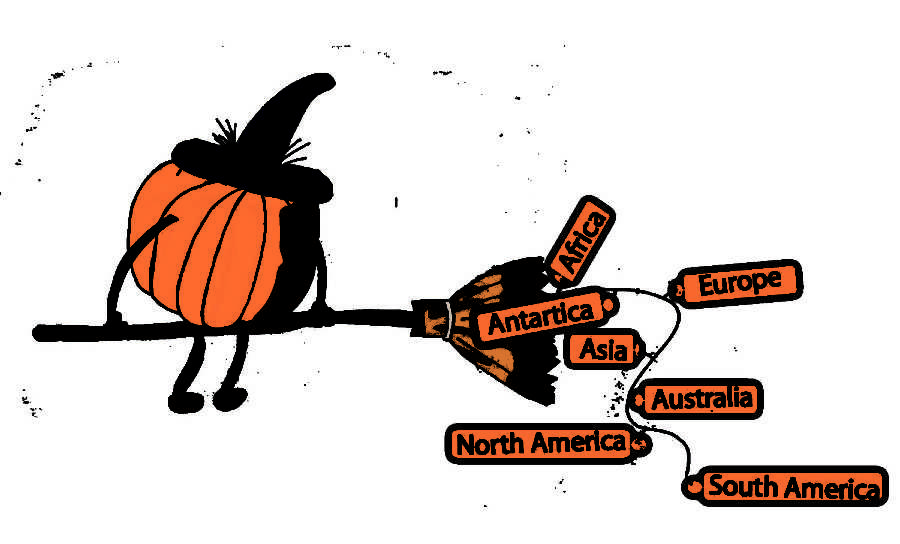Halloween creeps into international cultures
Graphic Illustration: Azwan Azhar/ Iowa State Daily
International Halloween
October 30, 2013
Halloween has been a celebrated holiday nationwide in the United States since the 1800s. But, it is a holiday that only recently started to be celebrated in some countries.
“Only in the past few years, [we] have gotten the influence from Western countries to celebrate Halloween,” said Kiran Rane, junior in electrical engineering and international student from India.
India is a very diverse country with numerous traditions and festivals but a nation-wide celebration for Halloween doesn’t exist, said Caroline Pereira, sophomore in aerospace engineering and international student from India
“It is starting out in big cities like Mumbai,” Pereira said.
People might host Halloween parties to which one comes dressed up. Some parents will take their children to upscale restaurants which have little parties as well.
“I haven’t seen kids go from door to door, ” said Rane. Trick-or-treating is unknown to children, she said.
During Halloween season in Mexico, two festivals are celebrated — Dia De Los Muertos, or Day of the Dead, and Halloween. On Nov. 2, the Day of the Dead, families remember their deceased relatives.
“They dedicate an entire offering to them as a remembrance,” said David Servin Rivera, sophomore in finance and international student from Mexico. “It is a very colorful celebration. They will take colored rice paper, cut different figures out and use them as decorations. The colors used will be Halloween colors like black, orange and purple.”
Another decoration for that event is an orange flower called cempasuchil, that has a very strong smell. It is specifically used for that day, and might be dyed black or purple.
“That day, basically the people believe that their dead relatives come down to earth to enjoy life again,” Rivera said. “People will cook their favorite meal and set up some off their favorite stuff, like a guitar for example, and in between those offerings they will put candles to guide the spirits to come down to earth.”
After the celebration the food will be thrown away since the deceased have eaten it.
More recently, on the actual day of Halloween, people have also started to celebrate. There will be parties, trick-or-treating and dressing up, Rivera said.
“But in Mexico, that has been twisted a bit since it is actually scary stuff,” Rivera said. “There are tons of devil costumes, or people will go as skeletons, werewolves or as a witch. It is seen as rather evil.”
It is a tradition that has been adopted more by the younger generations, specifically in big cities where people are in contact with international culture. In contrast to the United States, children walking from door to door will actually sing a song rather than use the known trick or treat phrase, Rivera said.
“It is pretty hilarious. It goes a bit like, ‘the skeleton is hungry, do you have a bit to share?'” Rivera said. “They go from house to house singing the same song over and over.”
Another tradition in Mexico is the sale of a bread called “dead bread.”
“It sounds horrible, but it is delicious,” Rivera said. “It is really buttery and with lots of sugar. They only make it during that season, and the tradition is to eat it with hot chocolate.”
Different countries celebrate various traditions and festivals during the year. Some cultures celebrate festivals of their own during the time of Halloween. But Halloween itself, as it is celebrated in the United States, is a concept that some countries have just started to adopt.
“It is a bit Americanization,” Pereira said.







